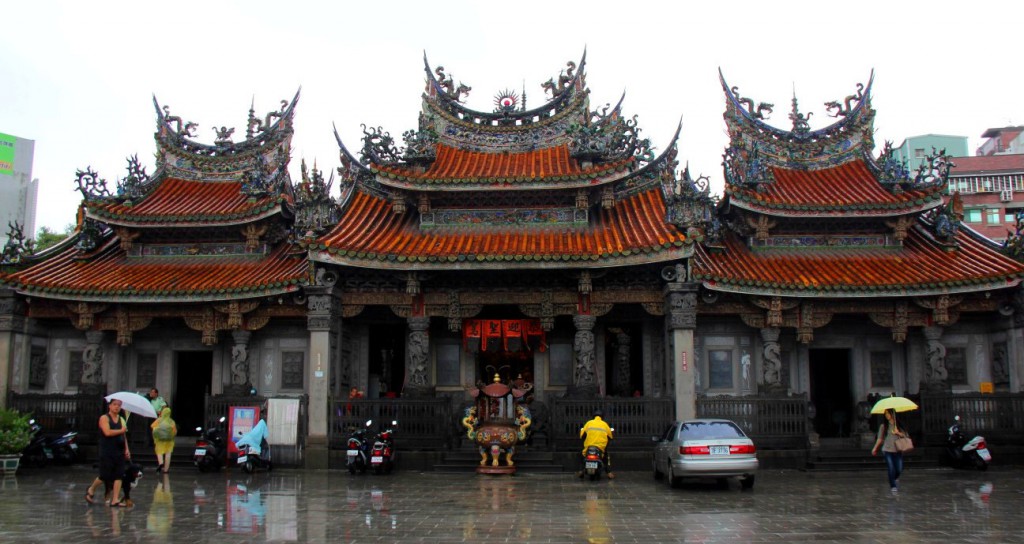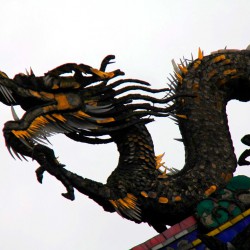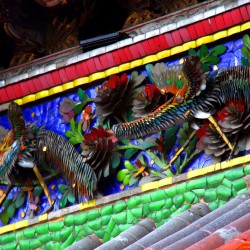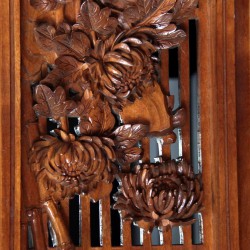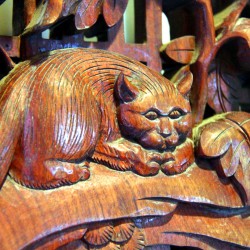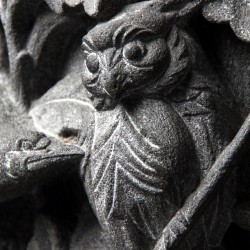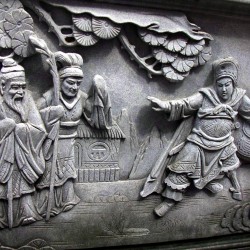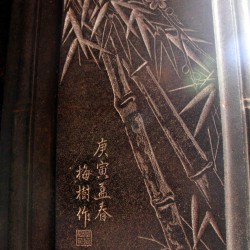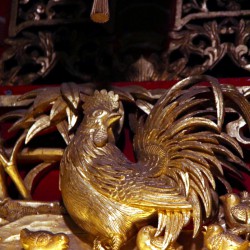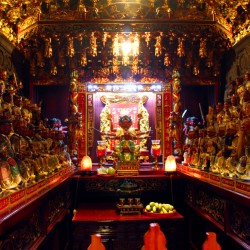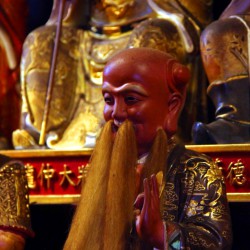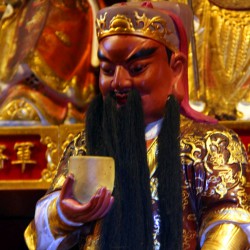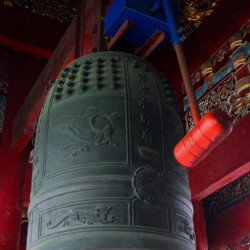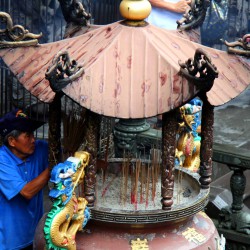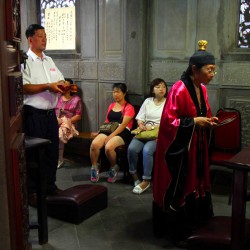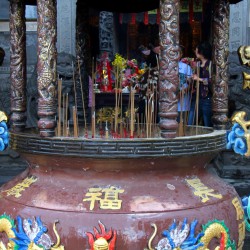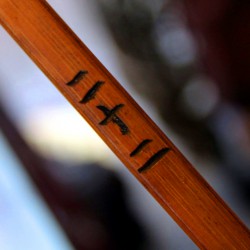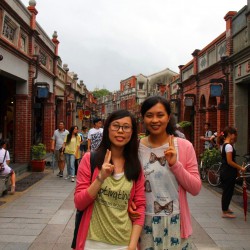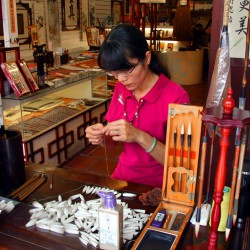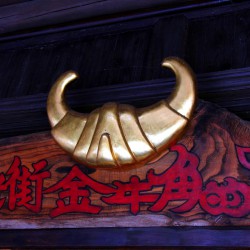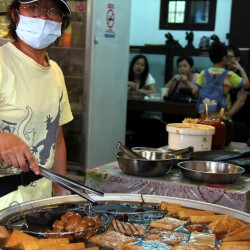Last week, at one of the free days during the moon festival, I was guided through Sanxia and Yingge by Jessie and her sister Erin. Sanxia is famous for the Zushi temple and it’s old street.
袓師廟 (Zushi Temple)
The temple was first built in the mid-18th century. It was reconstructed several times, particularly after being destroyed first by an earthquake and later by the Japanese. The last reconstruction has been ongoing since 1947 and is still ongoing. The temple is full of different kinds of precious artwork, most notably, stone carvints, wood carvings, and bronze statues. The model animals, plants, humans, gods, and scenes of ancient stories. The attention to detail very impressive. I think I could spend several days there just looking at all the small things.
(Click on one of the pictures and it will allow you to go through all of them in a slideshow style.)
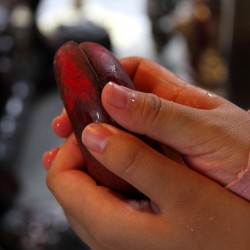
This is how you can ask a god for advice: Take two moon-shaped wooden pieces and drop them to the floor. If one ends up on its bottom and the other on its top, it means the god is ok with you asking.
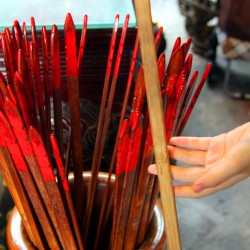
Next, shake these sticks, draw one, and repeat the moonpice dropping to check if the god agrees with the stick you drew (this repeated three times, but the god didn’t agree until Erin dropped the pieces for me).
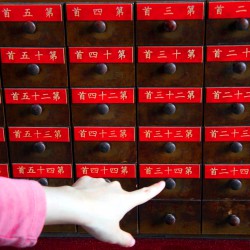
If the god agrees (moonpiece dropping), then you can open the drawer that shows the number of your stick.
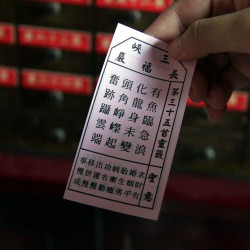
You will find a piece of paper with some Chinese characters, which have to be interpreted. I asked “Will I finish my PhD in 2014?”. The answer was “Everything will go smoothly. Be patient.”
三峽老街 (Sanxia old street)
The Sanxia old street is a well-preserved street built during the Japanese rule. There are plenty of handicraft and food shops. Sanxia is also famous for a specific kind of croissant. It’s taste and consistency is not at all what you’d expect if you are used to French-style croissants, but it is tasty and can be bought with ice-cream.
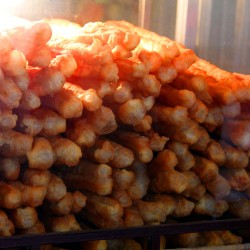
Taiwanese Churros!
